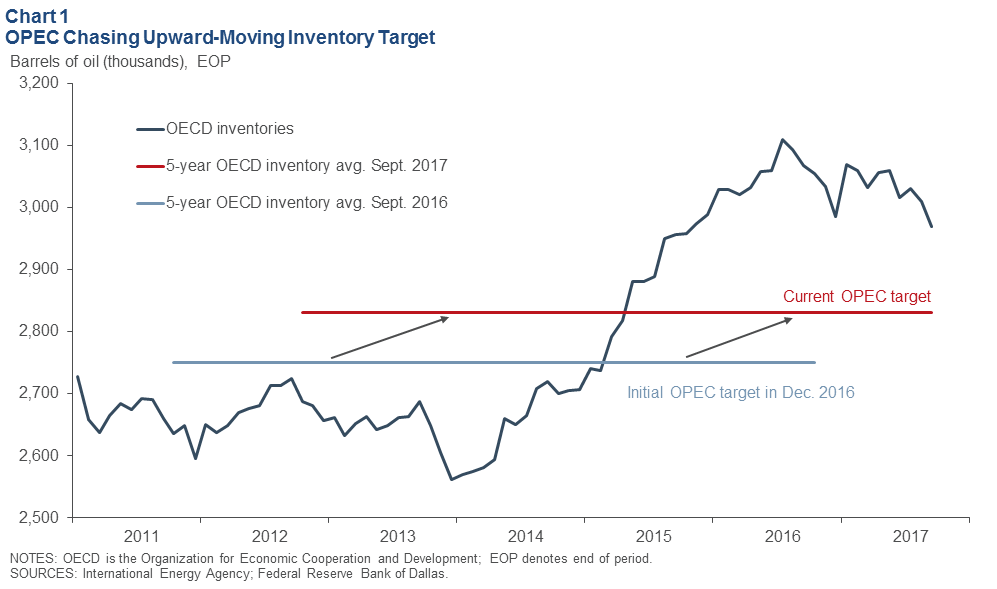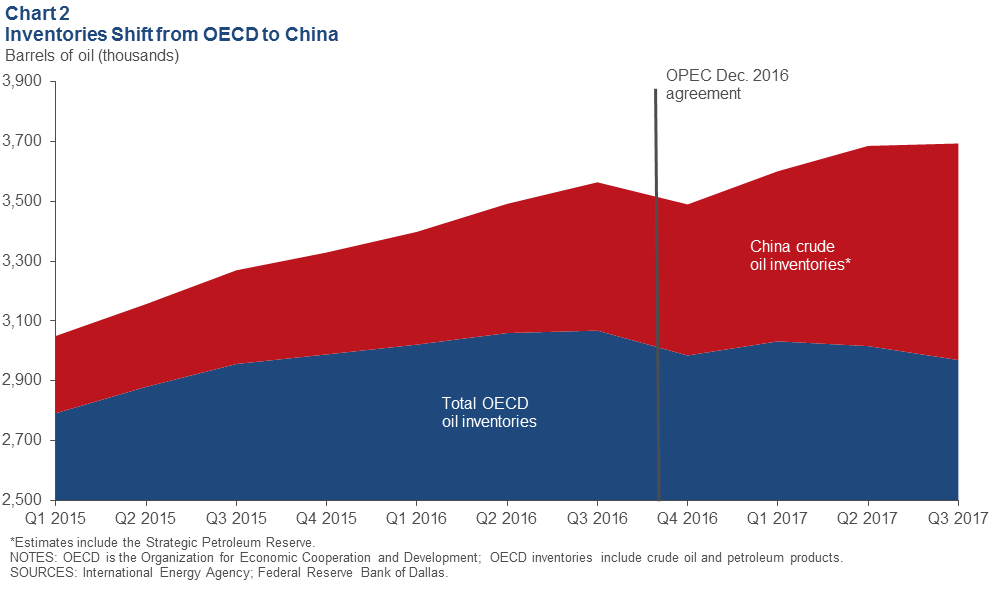from the Dallas Fed
— this post authored by Grant Strickler and Martin Stuermer
OPEC and some non-OPEC countries have agreed to extend their output cuts through next year despite losing market share. Crude oil prices have increased roughly 15 percent over the fourth quarter on the back of geopolitical turmoil in the Middle East and in anticipation of the agreement. This provides incentive to a U.S. energy industry that is gaining momentum in ramping up oil production.

OPEC’s Meager Results
OPEC and non-OPEC countries agreed to extend cuts of 1.7 million barrels per day (mb/d) for another nine months, from March to year-end 2018, broadly in line with market expectations. OPEC has sold its agreement as a success, citing declines in Organization for Economic Cooperation and Development (OECD) inventories above the five-year average. A closer look suggests that OPEC’s success story is in fact far more muted.
On paper, OECD inventories above the five-year average have fallen roughly 50 percent since the start of OPEC’s cuts in December 2016. However, only half of this decline represents actual inventory draws. The remainder is due to changes in the computation of the OECD inventory five-year average, which has been shifted upward since 2016. The new five-year average includes 2017 inventory data and is therefore higher (Chart 1).

Additionally, OECD inventories provide only a limited picture of changes in global inventory. While OECD inventories declined by about 100 million barrels (mb) from third quarter 2016 to third quarter 2017, Chinese inventories increased by about 200 mb. This suggests that OECD inventory declines perhaps only reflect a shift in inventory from OECD to non-OECD countries (Chart 2).

The future of the agreement is uncertain as well. First, the cuts will be reevaluated in June 2018, essentially limiting the effectiveness of the extension to three months. Second, Russia has a presidential election in March and the Russian government might reconsider its support of the cuts afterward. OPEC needs the participation of Russia and other non-OPEC countries because it has lost monopoly power due to higher elasticity of supply from shale oil.









Leave A Comment